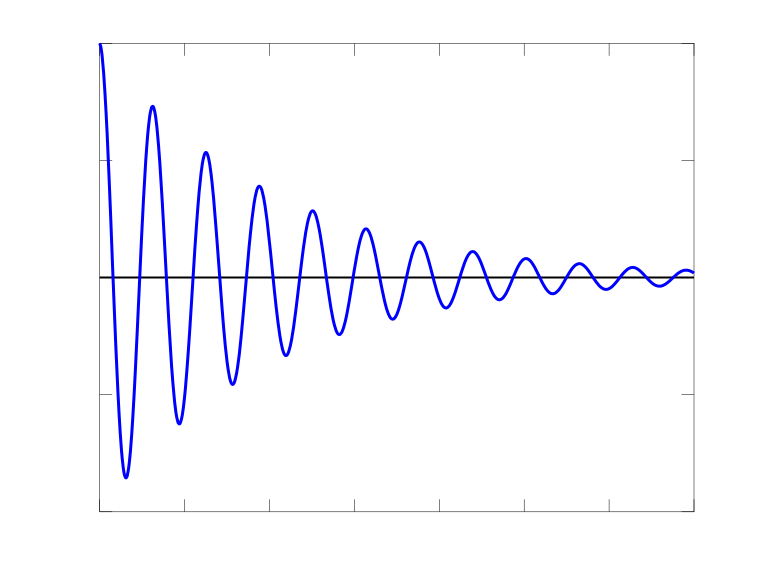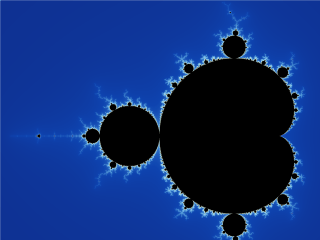I would like to present to you my perspective on the nature of our universe's existence.
First and foremost, many of my ideas are based on mathematical concepts I have learned through my engineering and personal studies. I will try to be as clear as possible. However, a basic understanding of a sine wave, Newton's Laws of Motion, the concept of energy conservation, and fractal geometry may be helpful. Also, I have built this model on the foundation of other's ideas. Therefore, not everything I will speak of is an original idea.
To begin, I will present the Big Bounce Theory. However, most everyone has heard of The Big Bang, I think, and thus we'll start there to move into the Big Bounce.
Let us assume that, at one point in time, all the matter which composes the universe was concentrated to one point in space. A point is defined as a coordinate in space and has no geometric properties besides that: it has no volume, no size. As you can imagine, this was a rather difficult position for all matter to occupy for any time. There was an immense build-up of potential energy here, in this point, as all the matter was compressed by the overwhelming force of gravity between each component within the point. This potential energy became so high that it could no longer be contained and *BANG!* All the matter that was in this point sprang forth as the potential energy was converted in to kinetic energy (and maybe heat? I will return to this.) and the matter accelerated outward in all directions. Thus was born our universe.
 |
| An image I found representing the Big Bang. Please note the central point. |
Here enters the Big Bounce. Because all the matter came from one point, I imagine that point as the gravitational center of the universe from which all matter accelerates with respect to. In the moment the matter "banged," the matter was accelerated and all the potential energy was instantaneously converted into kinetic energy. The primary force acting on the matter from this point on was gravity. Thus, all the matter was accelerating due to the force of gravity, but it was accelerating towards this gravitational center of the universe. Because the particles were moving away from this point (and in the opposite direction of the acceleration), we can say that all matter had a negative acceleration, and was thus slowing down.
To understand this, imagine throwing a ball in the air. It is accelerated by your hand and, from the moment of departure, its energy is purely kinetic. It is moving up but, due to the force of gravity, being accelerated downward. It reaches a certain point, stops, and returns to the earth. This is the principle behind the Big Bounce. At some point, the matter being accelerated towards the point of the Big Bang will stop moving outwards and will return towards the point. In this way, all matter slows as it moves out and gains speed as it returns. Eventually the matter coalesces again to the center of the universe. Here, the matter is compressed into a single point once more until the pressure becomes too high and the process repeats itself. In this way, the world acts in a cyclic manner, much like a sine wave.
That's essentially how it works. Now, here comes my crazy ideas, as this idea poses several issues to discuss from a theological standpoint.
First is the question of time. When considering the Big Bang, I ask myself whether or not time existed before the Big Bang. We use time as a reference for changes in space. However, without the existence of space, is it possible that time could have existed? We talk about the concept of space-time quite often, as if the two are mutually exclusive: as time progresses, the three dimensions of space change. If time were to stop, the derivation of space would remain constant and nothing would change, for matter in that moment simply is. So, without matter in space, is the concept of time tangible and, if not, can it exist? From here, I look at the idea of the Big Bounce. One could say that there is no beginning and the universe has been bouncing forever and will continue to do so. That is the easy explanation. However, there are two problems: friction and the presence of God.
Assuming there is a God, then He would have existed before time and commenced the first Big Bang, an idea accepted by Pope Francis. So cool, that explains why there was nothing before and where the heck all this stuff came from! Without a God, however, what would have caused the first big bang? In my eyes, the idea of a first Big Bang without the presence of a creator seems impossible. The matter could not have just come into existence of nothing, as this defies the laws of physics, wherein matter can be neither created nor destroyed. So, without a God, it must follow that the universe has been bouncing forever and time, thus, extends forever in each direction. This would be fine, except for our second problem: friction.
I mentioned earlier that from the potential energy in the point of the Big Bang, all energy was converted into kinetic energy. If that was the case, this would be a frictionless sytem with no loss of energy: a perfect machine. If this is true, then the universe itself would be the only known, functional model of a perfect machine, in which no outside force must be applied to perpetuate its cyclic motion. However, I also mentioned the idea of heat being created. Heat is a reaction caused by frictional forces. It is likely that in this astronomical event some frictional forces were present and that energy was lost in the form of heat. In this way, when the matter returns to its original position, it will have a bit less energy. When it returns outward again, it will travel just a bit less far. It will continue to do this until eventually all the energy is lost. If this is the case, I believe there must be a first Big Bang, an initial amplitude for the radius of the universe, and it gradually decreases through time. For this to be true, there must therefore be a God to commence the process.
 |
| An example of the universe with Friction, a dampened sine wave. |
To wrap these ideas up, there are two essential possibilities I see.
With no God, I believe time is infinite and has and will continue to exist forever. If this is the case, I also believe that the universe is a closed system and as it expands and contracts, there is no energy lost. I believe this is possible because any heat created from friction would still be contained within the system and would return with the rest of all matter to the point after each cycle.
With a God, I believe that the above theory could still be correct, with the caveat that there must have been a first Big Bang, as God could not have simultaneously existed with the first matter in the universe: He is the First. On the other hand, with God in the mix, it is also possible that the Big Bounce Model is not an example of a perfect machine and, in fact, there will be an end to the bouncing at some point: a start and an end to our universe.
Now, moving onward: What the heck is all the fractal business I alluded to?
 |
| This is a Mandelbrot fractal, please note the repeating patterns. |
Thanks for asking! To answer, I will pose another question: what the heck is a fractal?
Essentially, fractal geometry is a naturally occurring or computer-generated pattern in which a set of characteristics are randomly generated and they duplicate and/or evolve themselves to form an image. In nature, a very simple example of this is the shell of a snail, which is a generated pattern that extends onwards. A more advanced example would be a tree, in which there is a definite pattern to the growth of the limbs and production of leaves throughout a species, however each is unique and different. There are two important underlying characteristics of fractals. First is that if they are evolving fractals they are randomly generated and no two are exactly the same. Second is that each fractal will have a repeating pattern and are thus self-resembling. Many fractals are identical to themselves throughout and, as you zoom in or zoom out, the image will always appear the same, as with the spiral of a snail shell. With evolving fractals, there will always be some resemblance but it will not necessarily resemble entirely the original. We can generate these images with computers, and some examples are below. On a computer, because of the random nature of chaos theory (the fundamental back-bone to fractal's randomness), the same equation will always generate a different image.
Please read more about fractals here for a better understanding:
-http://www.fractal.org/Bewustzijns-Besturings-Model/Fractals-Useful-Beauty.htm
-https://en.wikipedia.org/wiki/Fractal
So a friend of mine, Miss Sarah Glover, showed a picture to me online several weeks ago which got my gears turning on this whole idea. This is it, here:

It's stark, the contrast, is it not?
I already knew about fractals and how they can be used to model different natural phenomena (please read the links above or just trust me). So I began to ask myself. . . .
What if our universe is a large fractal? If we halted time, and zoomed our lens out to see the whole universe, what would it look like? Maybe like the top picture up there. Regardless, I believe it would hold some pattern. If we zoomed in closer, perhaps the different galaxies would resemble the bigger picture universe in many ways. Maybe then, the solar systems are similar. Zooming way, way in, we look at things like our eyes, like the ways limbs grow on trees, like the patterns of our fingerprints and the cracks in the pavement of the road. . .could not these patterns resemble each other? If they do, perhaps its for good reason. After all, our world is confined to follow a specific set of physical laws. But what if, big picture, the framework for the way the world is today is defined by the shape of our universe?
My idea is that, essentially, each time the Big Bang happens, a new fractal image is created. This is similar to a Julia Set, in which the same equation can be used to generate different images each time. The equation is simply the set material that exists in our universe. Thus, with each bounce, our universe becomes something completely different than it was before, though defined by the same set of physical laws. And the process repeats itself. Who runs the computer? Who made the computer? Is it God? Is it just how things have and always will be? In any case. . .we got ourselves inside one dang-cool fractal, because I like this crazy place.
Hope this made sense and, if it didn't, at least got you thinking a little bit.
Sorry I haven't posted a blog in so long. I've been super hectic-busy. Finals week is next week for me. . .wish me luck! I will post a super awesome re-cap for my winter break with Dad and Sara and Sarah, and also what I've been up to recently, including my. . .gasp. . .thoughts and feelings. :)
Later gaters!
-Hy
The gift of humanities to the engineer. This is wonderfully conceived and composed, Hyland.
ReplyDelete